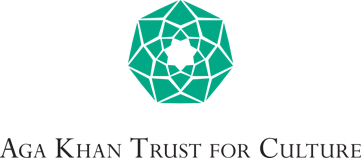Teaching Materials and Publications
The Aga Khan Trust for Culture (AKTC) Education Programme develops teaching materials and processes to share the knowledge accumulated by the Aga Khan Award for Architecture and the Aga Khan Historic Cities Programme with university and high school students, as well as a broader interested public. Materials include teaching packages and curriculum units.


AKDN / Ali Shan
Transforming Knowledge Into Pedagogy
AKTC Education and the Aga Khan Education Service in Pakistan are developing a cultural heritage programme that draws on resources developed through the work of the Aga Khan Historic Cities Programme, the Aga Khan Award for Architecture and the Aga Khan Museum. These units support engaging, ethical and pluralistic learning and teaching within the Personal, Intellectual, Social & Moral Development Curriculum (PrISM). They do this by encouraging students to reflect on how cultural assets can be deployed to bind communities together and effect sustainable physical, social, cultural and economic development.
The learning experiences draw on specific projects, award recipients, objects and artefacts both in Pakistan and elsewhere in the world where Muslims have a significant presence. They do so in ways designed to promote the holistic intellectual development of well-rounded students who value pluralism, are prepared to meet local, national and global challenges and are able to interact effectively with others.


AKDN / Lucas Cuervo Moura
Judging the Arts for the International Baccalaureate
A module entitled "How can we judge the Arts?" was prepared for the Theory of Knowledge curriculum of the International Baccalaureate (IB) Diploma Programme by the Egyptian expert Seif El Rashidi. This was the first prototype teaching package developed by the Education Programme in 2017, in cooperation with the Aga Khan Academies.
The pilot of this module shares lessons related to the judgement and appreciation of architectural design, drawn from the experience of the Aga Khan Award for Architecture. It has been extensively tested at the Aga Khan Academies in Hyderabad, India and Mombasa, Kenya. See the final version
The module is a sample resource for the IB’s revised Theory of Knowledge course, which is running from 2020 to 2029. The module illustrates ways that teachers can implement the new structures, issues and terminology included in the revised guide. Staff at the IB will be involved in sharing the module with the wider IB teaching community.
A teachers' resource entitled "Treasures of the Silk Routes" was prepared earlier by the Aga Khan Academies in cooperation with AKTC (and the Aga Khan Museum). These resources are freely available for schools to download and use for educational purposes, with appropriate attribution.


Aga Khan Award for Architecture
Lecture: School Buildings
Over the last four decades, the Aga Khan Award for Architecture has recognised and categorised many school buildings. See the lecture


AKDN / Adrien Buchet
Architectural and Urban Forms of the Islamic World
This series of lectures presents a comparative picture of urban and architectural form across the Islamic world. It also explores notions of integrated urban rehabilitation that bring together conservation and community engagement.
Examples from both the so-called “high” and “peripheral” Islamic traditions are presented. They provide a thorough understanding of both the distinctiveness and diversity of outlying architectural and urban forms. Alongside examples drawn from the great centres of Islamic culture, such as Aleppo, Cairo, Delhi, Herat and Isfahan, various sites from Oman are also presented.
These lectures were prepared on behalf of the Education Programme by the Centre for the Study of Architecture and Cultural Heritage of India, Arabia and Maghreb (ArCHIAM) at the University of Liverpool, UK.
The material presented in these lectures was collected from different archival sources, mainly the AKTC and other AKDN agencies, as well as primary material on Oman held by the ArCHIAM Centre. The Aga Khan Documentation Centre, MIT Libraries, was a main archival source, as well as the open access resource Archnet.org. See the lecture companion


The architectural and urban contributions of the Deccan Sultanates of India remain relatively unknown, beyond a handful of well-publicised monuments.
Archnet
Architecture and Urban Development of the Deccan Sultanates
This series of lectures focuses upon the little known architectural and urban contributions of the Deccan Sultanates of India. The Deccan Plateau, lying south of the central Indian mountain range, occupies a significant part of the triangle-shaped peninsular Indian landmass. Islamic cultural and architectural influence extended into the region from the late 13th century onwards, reaching its apogee during the rule of the five Deccan Sultanates – Ahmednagar, Bijapur, Berar, Bidar and Golconda – during the late 15th to the late 17th centuries. In an attempt to bring this distinctive late-mediaeval Islamic period architecture into sharper focus, this series of lectures draws on existing scholarship as well as new research undertaken in Bijapur.
These lectures were also prepared on behalf of the Education Programme by the Centre for the Study of Architecture and Cultural Heritage of India, Arabia and Maghreb (ArCHIAM) at the University of Liverpool, UK.
